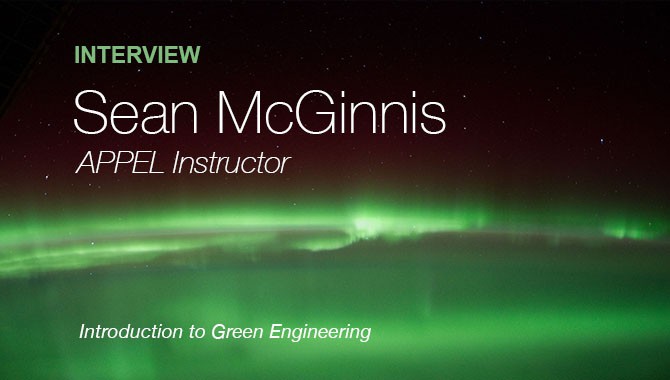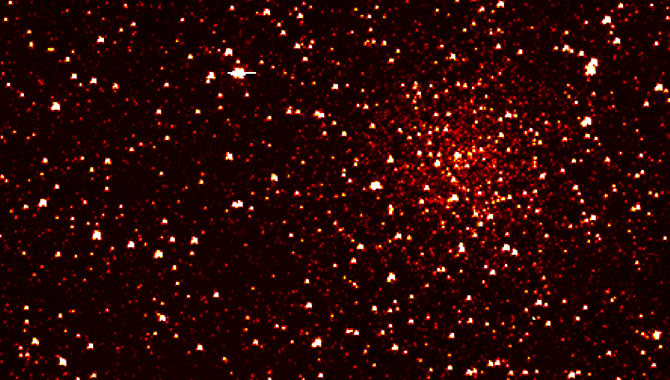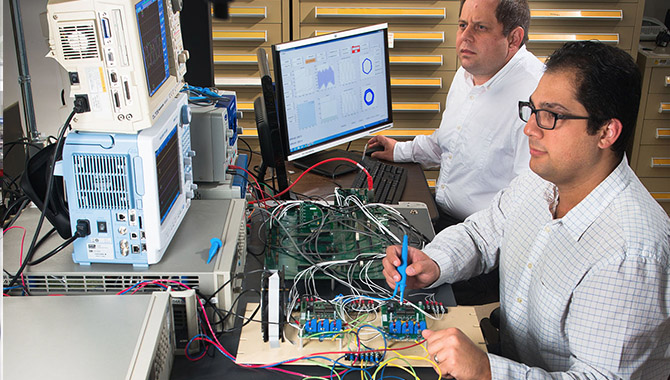
The term “green engineering” is increasingly popular, but what does it really mean to NASA’s missions?
At NASA centers across the country, the agency’s technical workforce practices world-class engineering. This includes considering the risks facing a mission, prioritizing them, and conceiving of ways to work around them in order to move the mission forward. But how does this change as concerns about environmental impacts increasingly become part of the picture? APPEL News recently sat down with Sean McGinnis, the instructor of Introduction to Green Engineering, to learn more about how the concepts of green engineering fit into NASA’s work—and why everyone, not just engineers, should incorporate them into their thinking across the life cycle of a project.
APPEL News: Thanks for talking with us about Introduction to Green Engineering. Let’s start with the basics: what is green engineering?
Sean McGinnis: Different people define green engineering differently. There’s no single definition, but the key focus is that green engineering is an approach to designing products, processes, and systems that consider the environmental impacts from the start of the design process. What you’re trying to do is to minimize environmental impacts while still meeting all of the other constraints: performance constraints, costs constraints, safety constraints, political and cultural constraints. It’s a way of designing products that ensures the environmental impacts are considered right upfront. For many, many years, environmental impacts were only considered at the end of the design process. But if you don’t consider these issues right from the start, you miss significant opportunities to make a big difference.
APPEL News: Can you tell us a bit about the course?
McGinnis: I teach green engineering courses at Virginia Tech, where we offer a green engineering minor. Two of our courses are “core courses” designed to get all of our students—whatever their background or discipline—on the same page regarding environmental issues and designing to minimize them. The APPEL course Introduction to Green Engineering is a summary of those two core courses. It gets NASA participants familiar with the terminology, helps them understand some of the core concepts, and then prompts them to think about how these concepts could be applied to the kinds of projects and missions they are involved in.
APPEL News: What inspired you to bring this course to NASA?
McGinnis: There’s been a long history of people thinking about environmental impacts at NASA. I got involved a number of years ago at the 2009 Green Engineering Masters Forum that included NASA personnel, industry personnel, and some people from academia, where we discussed how best to approach considering environmental impacts in NASA missions and looked at best practices from academia and industry. Ted Biess, NASA program manager and the sponsor of this course, was one of the coordinators of this forum. He and I began talking about offering a course on the subject to NASA personnel and eventually this discussion led to the Introduction to Green Engineering course.
APPEL News: Why is Introduction to Green Engineering a good fit for APPEL?
McGinnis: Systems engineering is a core concept of green engineering. You can work on green engineering at all levels of personnel, but systems engineering is really what you’re doing. Often, in the past, the environment wasn’t a core part of the system thinking—it was an afterthought. This led to unintended consequences that had to be dealt with later through remediation or redesign. So one of the reasons the course is a good fit for APPEL is that APPEL supports NASA’s project management and systems engineering communities, and green engineering is an extension of systems engineering to include environmental issues. Our goal is to look at “normal” systems engineering and make sure that when you think of your system—and everything that goes in and out of your system—you’re including the environment as part of that system.
APPEL News: So green engineering is essentially part of what people are doing already?
McGinnis: That’s right. It’s not separate, it’s not extra: it’s something a good engineer would do as a best practice anyway. Engineers and scientists should include the environment as one of the design constraints. The kind of engineering NASA does is at a world-class level, and a world-class engineer should automatically include environmental impacts. The problem is that most people were not originally trained to think about that as a way to do things, so it’s not common practice.
APPEL News: Is the practice of green engineering solely the responsibility of systems engineers?
McGinnis: No. For green engineering to be incorporated effectively into a system from the start, it needs to happen across the workforce. However, project managers have a lot of control over how a project is run. So if you can get project managers onboard with the concepts of green engineering, they’re going to automatically push some of these concepts and best practices down to their whole team. Getting both project managers and systems engineers trained to do this gets you farther down the path, faster.
APPEL News: How does the course content support NASA’s technical workforce and the NASA missions?
McGinnis: It supports the workforce in the sense that, as time goes on, what we are seeing—not just at NASA, but in general across the U.S. and around the world—is that there are more and more environmental regulations that projects have to meet. Those environmental regulations are part of the system as well. They’re constraints that have to be managed and optimized as part of a project. These regulations lead to, for instance, bans on some materials over time or increased cost because you have to clean up things in a new way or handle some of the upstream materials in a different way. And all of those considerations add mission risk. NASA has long-term—years, decades, multiple decades—missions, and environmental regulations are changing throughout those missions. So this course gives the workforce a framework of best practices for how to think about not only current environmental issues but also how to minimize problems in the future.
APPEL News: What are some of the goals of green engineering?
McGinnis: From a budgetary perspective, any future remediation that can be avoided allows more of NASA’s budget to be used for future missions rather than to clean up problems from old missions. You’d rather spend your money looking forward to missions than looking backward to fix things that got overlooked, that weren’t included in the thinking for the original system. Companies in private industry face this, too.
Now, a challenge—and this is one of the issues in the course—is we can’t predict all of the possible environmental issues going forward. A lot of the problems don’t occur because someone did something wrong but because scientific understanding or environmental regulations changed over time. These changes are difficult to predict and you don’t always get it right. But having a broad systems perspective, which includes considering environmental impacts, makes you more likely to identify some of the things that might be problems in the future—things you could avoid with a little more care and attention on the front end.
The goal is to make decisions that limit mission risk. That’s an example of world-class engineering: looking at the risks, prioritizing them, and then working around them. NASA is typically very good at that. Green engineering extends this type of thinking even further to include concerns about environmental risks, not just technical risks.
APPEL News: How does the concept of “life cycle assessment” figure into green engineering?
McGinnis: A core concept of green engineering is life cycle assessment (LCA). This is a formal method to quantify environmental impacts across the whole life cycle of a project. And what we mean by life cycle is typically four phases: extraction, manufacturing, use, and disposal. The life cycle assessment tries to quantify the environmental impact in each one of these phases. A few key decisions at the beginning of the process could really help reduce or eliminate problems later. When individuals just focus on their particular stage of the process, that’s not systems thinking. Orbital debris is a great example of what happens on the back end if no one thinks about the system carefully on the front end. What you really want to do is design things so you minimize any orbital debris—or other kind of environmental impact—in the first place.
APPEL News: So, in the course, you talk about the role of decisions made in each one of those life cycle phases and the impact they have on the potential for green engineering overall?
McGinnis: What I try to do is give real NASA examples for each of the life cycle phases. And we encourage the participants to talk to each other. They often come from different directorates or have different roles in the mission, so we might have them think about a specific part of a project they work on and then ask them to extend their thinking to the people who work on the mission in front of them, upstream, and the people behind them, downstream, throughout the whole life of the project. Many of them have thought of some of these issues before, but not this broadly. This process of thinking upstream and downstream really opens people’s eyes. Many engineers have a very specific focus—that’s true in any industry. They’re working on one particular aspect of a project and they’re not really thinking about what happens upstream or downstream. We help them to develop that kind of thinking.
APPEL News: Do you find it different to teach engineers at NASA versus students at Virginia Tech?
McGinnis: Obviously there’s a huge experience gap between university students and practicing engineers. People at NASA can move through some of the concepts more quickly. The APPEL course is much more interactive and we use many more real-life examples. It’s easy for the NASA science and engineering people to come into the course with their own experience and examples. Their interest level, motivation, and ability to put these concepts into practice quickly are high. Whereas most university students won’t put these practices into place until they get out into workforce.
APPEL News: Thanks for taking the time to talk with us about the course and the implications of green engineering for NASA practitioners and missions. Is there anything you’d like to add?
McGinnis: One of the cool things about teaching at APPEL is that I get to bring the course to different centers over time and hear their examples of incorporating green engineering. In many cases what I’ve found is that people are already doing green engineering—they just don’t call it that. And they often don’t highlight some of the savings and benefits they get from these efforts. So we really encourage practitioners to let other people know what they’re doing and to emphasize the benefits they get from saving materials or energy and avoiding disposal issues, for example.
This kind of thinking is also a big part of NASA’s future plans. If you’re going to go to the moon or Mars to try to set up a permanent base, it’s in your best interest to reuse everything. Once a product is done with its primary use, the question is how best to use it for something in the future. Reusing and adapting materials, thinking about secondary and tertiary uses, that’s what NASA is doing. It means you don’t have to throw anything away, you can limit the amount of materials you bring with you in the first place and limit the amount of fuel you need to transport things—these are all benefits of practicing system thinking that includes green engineering. A goal with Introduction to Green Engineering is to get more people interested in and thinking about these issues.
__
Introduction to Green Engineering is offered periodically at different NASA centers and can be found in the APPEL Catalog. The instructor, Dr. Sean McGinnis, is Director of the Green Engineering Program at Virginia Tech. Due to his background in engineering and environmental sustainability, McGinnis was invited by NASA program manager Ted Biess to co-develop the course in order to address NASA interests concerning green engineering. Before joining Virginia Tech, McGinnis worked in various research and development positions in industry, which is where he was exposed to the concepts of green engineering. He went back to academia in 2005 to focus on the education of students, especially engineers, in the area of environmental sustainability.








